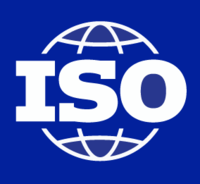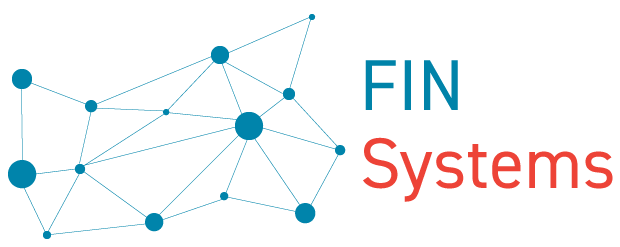FSMS Unternehmen Artikel und Aufsätze ISO20022 Payments 2018/2019 Maintenance – yet a...
10.08.2021 - ISO20022 Payments 2018/2019 Maintenance

On January 21st, 2019 the ISO 20022 Payments SEG approved its annual revision of the Payments Maintenance scheme, titled Payments Maintenance 2018/2019, part of it being the Payments Initiation sub-scheme, now available in Version 10. It has been doing so for many years already, starting in September 2006, one year after the standard was established in September 2005. The annual maintenance bundles several change requests raised by different submitting organizations throughout the year which have been found relevant enough to alter the standard and not urgent enough to be deployed right away and “outside of the normal yearly cycle”. While often enough these Change Requests relate to message types only relevant for interbank communication or reporting and are as descriptive and understandable to the eager but non-professional reader as a modern multi-core CPU circuit diagram this time the maintenance brought about important changes to message types basically every commercial business engaging in automatic payments is using and should be aware of. Yet most companies still use the already obsolete message versions 02 and 03 introduced in the September 2006 and 2009 Maintenance cycles and thereby unknowingly suffer from missing value options and message elements required to submit sufficient and sometimes even legally required information to their banks. This article aims at introducing the most important changes of this 2018/2019 Maintenance from a commercial enterprise’ perspective and explain why it is important for enterprises to change to the newer versions as well as for banks to offer them to their customers in the first place!
- First things first: CR 748 raised by the UK-based New Payments System Operator (NPSO) and supported by the Bank of England Real Time Gross Settlement (RTGS) Renewal Programme an optional cash account alias / proxy element group relevant for a wide range of messages throughout different application areas was introduced enabling the identification of a bank account not only by means of the traditional account number or IBAN but also by additional means like a mobile number of email address. As this account alias may not always be personal to the actual account holder but be linked to an International Mobile Equipment Identity (IMEI) or even a retailer’s point of sale terminal the element group is attached to account details (now CashAccount38) rather than the account holder’s institutional / personal information. The addition of this account alias / proxy element group is an important contribution to the standard, allowing for payments being initiated without the parties actually knowing the underlying bank account numbers!
- By incorporating CR 731 raised by the Payments Market Practice Group (PMPG) into the standard an optional LEI (Legal Entity Identification) element as recommended by the Basel Committee on Payments and Market Infrastructure (CPMI) to be used in payment messages was added to the new PartyIdentification131 message component. This information is now available in 2.203 elements representing an involved party, agent or other institution in 85 messages throughout the standard, impressively underlining its importance. No less impressive is the list of improvements it shall bring to data quality and payments processing in general (quoting CR 731):
- Increase data validation at payments capture and during processing.
- Potentially higher STP (“straight through processing”, the author) rates
- Mitigate data truncation in name and address data when it exceeds the field size of message party fields when it will be possible to substitute the LEI to the name and address data.
- Simplify screening and control processes resulting in reduced lead time for Compliance related investigations and eliminating potential delays during payment processing from false hits in compliance and sanctions screening.
- Optimized and more accurate AML controls and detection of suspicious activities by leveraging LEI to standard industry code mappings
- A connection between LEI data and external data services bases providing by specific data vendors including line of business and industry codes can permit a more systematic and robust review of payments for inconsistent or suspicious patterns.
- Improve credit and counterparty risk management capabilities.
With delays in payments straight through processing due to missing or incomplete data or “false positive” handling at the banks being one of the major issues and cost drivers in payment process automation corporate users of the ISO 20022 standard should rush to transition to the new message versions in order to make use of this important new element!
- Contributing to the problem of tracking payments through the payment lifecycle and also to leverage transitioning from local proprietary message standards to ISO 20022 the High Value Payment System (HVPS+ group) proposed the introduction of an optional UETR (Unique End-to-end Transaction Reference) identifier on the transactional level in the UUID v4, i.e. 36 alphanumeric digits, format (CR 730). The CR also features the new TransactionIdentificationPresenceRule which demands that either the UETR or the 35 digit TransactionIdentifier must, while both may, be present.
- The Bank of England contributed two more very useful CRs, 724 and 726 covering the introduction of MIKS name prefix and additional fields to the widely used Postal Address message component. While the MIKS name prefix provides a title for people who do not identify as a male or female, the extension of additional fields Floor, PostBox, Building Name and Room to message component PostalAddress11 caters for the specialty of addresses in the United Kingdom of sometimes not having a street number but only a building name. This again underlines the willingness of banks in the United Kingdom to adopt and integrate the ISO 20022 standard into local payment mechanisms (for further information see my article on ISO 20022 CHAPS integration).
The 2018/2019 brought about important changes and innovations in the payments area not only for banks but for commercial businesses as well. Equally important, these changes and innovations have been improved and extended even further during the latest 2019/2020 and 2020/2021 Maintenance cycles. Being aware of these changes and transitioning to the latest message versions (such as pain.001.001.11, pain.008.001.10 etc.) should therefore be a priority for all banks and businesses in order to comply with current legal obligations and stay in touch with the latest technologies and features offered by the standard.
The full list of CRs incorporated into the 2018/2019 Maintenance can be found attached to this article.





